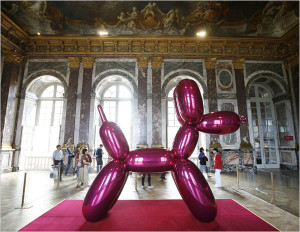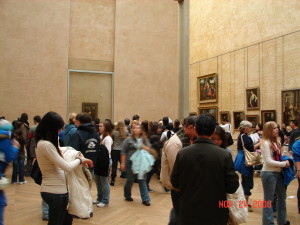This second portion of the book was much more interesting and easier for me to visualize in terms of public curation. I love the idea of increasing the amount of history blended with art. I feel that as historians, we all have similar educational backgrounds. Many artists come from outside that background and provide creative ways of showcasing history (and do not shy away from controversial subjects) that perhaps historians would not otherwise consider. Mining the Museum represented a good balance of art and history collaboration. Wilson stressed context and environment when he was creating the installation, as well as communication and trust with the museum staff. That trusting relationship and communication between curator and artist is the key to creating these installations, and having expectations met. I cringe at the prospect of relinquishing control of anything, but with trust and communication, I think we can see the benefits. Art and history are so connected that I don’t think you can separate them, even with contemporary artists and their interpretations.
I was happy that the Story Corps chapter addressed some of the questions I had when reading it. I liked that Story Corps took these stories and created a “bottom up” framework and empowered people, but was hesitant to call it history. I agree that when the goal is to connect people emotionally without context, and not necessarily to inform, then can it really be called history? I understand that it can loosely be seen as oral history, but having an agenda attached, specifically to make people cry, is it fair to be included? We have seen that when historians edit and manipulate evidence, as the Story Corps people have done, it calls into question your whole body of research (David Irving, anyone?). By making the people telling the stories nondescript, I feel like that takes away from the historic value that can be gained from listening to people’s experiences. I see the draw and power that these stories have, but I suppose the problems for me were that they were nondescript people and that the narratives were heavily edited. Since I was hesitant to consider this history, I was confused why it was included at all.
While reading this book, I was asking myself the very question that appeared on page 198. Does public curation engage a broader audience or does it simply engage a different audience? I know more research needs to be done to answer this question, and I’m curious to see the results. In my experience, I keep thinking back to a few people I know that have no interest in museums, regardless of the content. Either they do not have the money or time, or they feel that other things are more important and leave the museum visits to school field trips. I see the value in public curation and the attempts to gain broader audiences, but I wonder how many people like this are out there who just refuse to go to museums. Is the goal of these efforts to change their minds?
Lastly, I couldn’t help thinking of a history-art instance that went terribly wrong that I experienced, again in my trip to Paris in 2008. One day of my visit was spent at Versailles. At the time, Versailles was home to an art installation by Jeff Koons, which featured giant balloon animals and vacuum sculptures amongst the baroque palace rooms. In my personal opinion, it was ugly and bizarre, with no collaboration between art and history. As a tourist, you go to Versailles to see the Hall of Mirrors, the gardens, and Marie Antoinette’s bedroom. You go for the extravagance, albeit the very thing that ruined the monarchy, but nevertheless, the sheer extravagance and significance is the draw. The sculptures had no context or relevance to the baroque period and were completely out of place. Had they been in a museum that covered a range of time periods and pieces it would have made more sense, but by choosing a historical site such as a baroque palace, it really soured my memory of touring Versailles. Call me old-school, but I did not appreciate modern art juxtapositioned with the most famous French palace. I think this can be considered an example of what not to do.

Here is the link where I found the picture. It contains a slideshow of all the pieces at Versailles if you’re interested in seeing more: http://www.nytimes.com/slideshow/2008/09/11/arts/design/20080911_KOONS_SLIDESHOW_index.html
On a side note, this weekend I watched a documentary on Netflix called A Ballerina’s Tale. It follows Misty Copeland’s journey to become the first black principal dancer of any major international company in 2015. The documentary remarked that by casting Copeland in famous major roles with the American Ballet Theater, it brought many different people to the theater, a place that historically does not contain much diversity. It discussed the growing diversity within the arts, the “color of ballet”, and the influences that can have. I connected it with our reading because museums are trying to do just that. Their goal is to broaden audiences, just as ABT had done. Plus, you get to see some beautiful dancing. Just thought I’d mention it because this happened so recently (2015) and shows that boundaries still exist within art and history.

